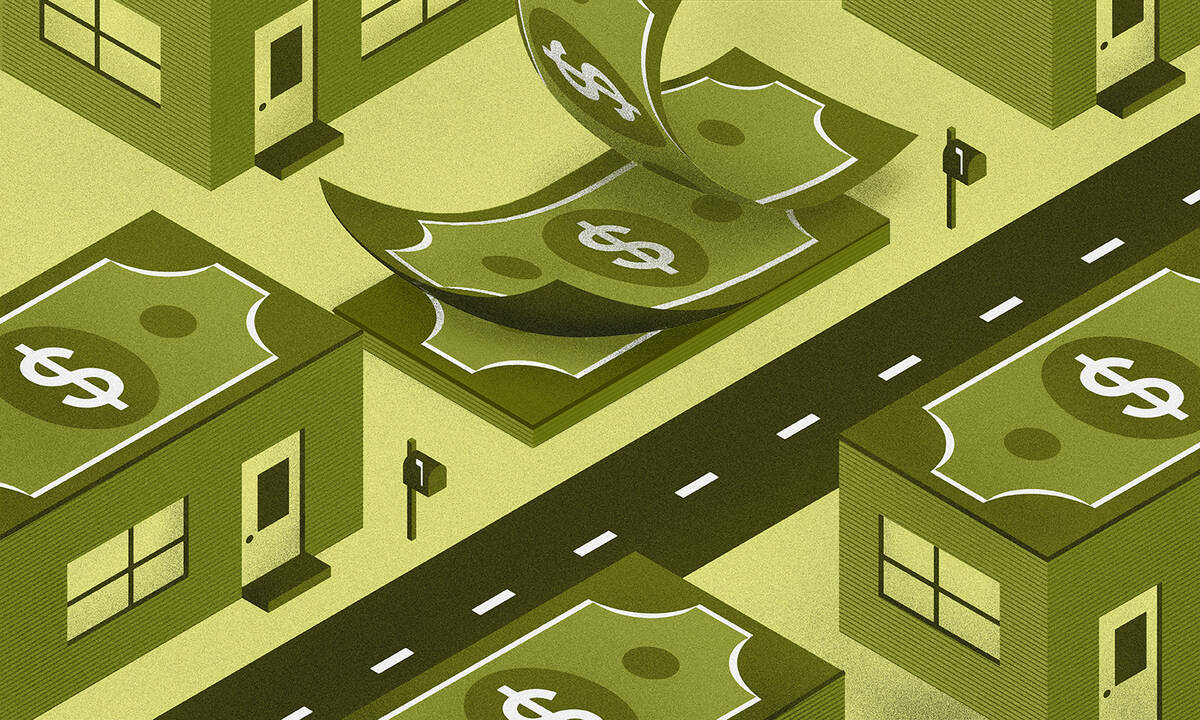Economics Finance & Accounting Policy May 5, 2020
Here’s How Americans Are Spending Their Stimulus Checks
Real-time data pinpoints what we’re buying, and who’s spending the fastest.

Riley Mann
When Congress passed a $2 trillion aid package in late March, part of its goal was to give a quick adrenaline shot to the sputtering economy in the form of $1,200 stimulus checks for eligible individuals.
But that shot would only work if people indeed spent the money, rather than squirrel it away. So how much of their stimulus checks are Americans spending, and how quickly? And which parts of the economy are benefiting the most from that spending?
Kellogg’s Scott R. Baker and fellow researchers have provided early answers to these questions based on real-time transaction-level spending data. They find that stimulus recipients are parting with their money remarkably quickly; on average, Americans spent roughly a third of the government-issued funds within 10 days of receiving it.
The biggest predictor of who burns through the money most quickly isn’t income, or even loss of a paycheck. Rather, it was liquidity: those with less money in their bank accounts when the check arrived tended to spend more of their check right away.
The analysis, done along with R.A. Farrokhnia and Michaela Pagel of the Columbia Business School, Constantine Yannelis at the University of Chicago’s Booth School of Business, and Steffen Meyer at the University of Southern Denmark, also reveals clear patterns around how people are spending their stimulus money. In the past recessions, a significant portion of the checks went to big durables purchases, like cars—but in 2020, much more of the spending is devoted to groceries and takeout food, as well as to catching up on rent and bill payments.
The team’s findings help pinpoint which sectors are most responsive to consumer-focused stimulus programs, and which may need support in other ways if the economic fallout continues.
For example, the stimulus clearly helped boost demand for restaurants. “But some industries you won’t be able to stimulate this way,” says Baker, an associate professor of finance at the Kellogg School. For instance, the data suggest that even generous checks may not convince consumers to spend on vehicles or other modes of travel so long as quarantines remain in effect.
Tracking Stimulus-Check Usage with Real-Time Spending Data
The researchers focused on the individual stimulus program that was part of the Coronavirus Aid, Relief, and Economic Security (CARES) Act. The program provides $1,200 to individuals, or $2,400 to married couples, plus an extra $500 per child, with the amount decreasing after certain income cutoffs. The vast majority of Americans qualified for the emergency payments.
The researchers accessed real-time transaction-level spending data from SaverLife, a nonprofit that helps people create budgets via an app (similar to the personal finance tool Mint). Their sample included 5,746 users, about 30 percent of whom received the government stimulus check within the first week of distribution. (Because the federal government is staggering the deposits, the rest of the sample would likely receive their deposits in subsequent waves.)
Within 10 days of receipt, those who had received the stimulus payments had spent $600 more than those for whom the check hadn’t yet appeared.
The SaverLife users in the researchers’ sample have an average annual income of about $30,000—significantly lower than the national average of roughly $63,000. While the researchers didn’t have detailed demographic data for all users in their sample, the average stimulus deposit was about $1,800, suggesting that it was a mix of individuals and married couples, parents and nonparents.
Overall, the researchers found that stimulus recipients began spending immediately after the checks landed in their accounts. Within 10 days of receipt, those who had received the stimulus payments had spent $600 more than those for whom the check hadn’t yet appeared.
About half of that spending happened in the first three days after the check’s deposit.
Importantly, however, spending patterns differed based on income and liquidity.
How People Spent Their Stimulus Checks
When the researchers divided the sample into four groups based on monthly income, they found stark contrasts in how quickly the money left users’ accounts.
Those in the lowest income group, who earned less than $1,000 per month, spent about 40 percent of the checks in the first ten days. That was twice as much as the highest income group (those making over $5,000 a month), who spent closer to 20 percent in that brief period. Because the sample is skewed towards households with lower incomes, Baker notes that usage of stimulus funds nationwide may more closely resemble this higher-income portion of the sample.
Next, Baker and colleagues looked at how spending differed for people whose income in March had fallen significantly from previous months (suggesting that the pandemic had negatively impacted their livelihoods). Surprisingly, however, they found that this group’s check spending was only slightly elevated compared to users whose income was unchanged.
Another part of the CARES Act might help explain why that was the case. “Unemployment benefits have been boosted substantially by the federal government,” Baker explains. “So for a lot of lower-income people, losing their job is not necessarily a bad thing in terms of near-term income.” (The researchers excluded unemployment payments from their measure of income, so these individuals would have appeared as having a significant drop in income.)
He adds that it’s also possible that the researchers didn’t achieve a perfectly clean measure of who lost their jobs and who didn’t by looking at the account data, since income for many can be somewhat “lumpy and irregular” even in more typical months.
Much bigger differences appeared when the researchers analyzed users’ liquidity levels, measured by the amount of money in their checking accounts. (The median balance in the sample was about $141.)
People with the highest amounts of cash on hand—$3,000 or more in their checking accounts—had no response to the appearance of their stimulus check. On the other hand, those who maintained accounts with $500 or less spent almost half of the deposits—44.5 cents per every dollar—within 10 days.
What did they spend this money on?
People spent their stimulus checks on a range of items and services, with spending increasing meaningfully in nearly every category. In each of the three days following check receipt, individual spending increased by between $50 and $75 for food, household items, and bill payments, including rent, suggesting that many people were using the funds to obtain necessities and catch up on bills.
Compared to stimulus recipients in past recessions, people today are spending much more of their stimulus money on food, Baker notes. The study found large jumps in restaurant takeout and delivery in particular, with spending in these subcategories surging by about 300 percent in the first few days after the stimulus checks arrived.
“It might be that people are substituting away from splurging on other sorts of entertainment, since that’s all closed, and they’re ordering out more,” Baker says.
“Our research shows that if you want to have a large fiscal multiplier ... then it probably makes sense to target people based on liquidity.”
On the other hand, today’s stimulus recipients are much less likely to spend on durable goods like electronics, furniture, or—especially—cars. In 2008, those who received stimulus payments were much more likely to use the money toward these types of items, with 90 percent of durables purchases going toward auto spending.
“Now, people are stuck at home, so maybe there’s not as much desire to buy a car,” Baker theorizes.
Lessons for Future COVID Stimulus Policies
As the pandemic and attendant economic pain drag on, Baker hopes that the team’s findings can help inform the future stimulus packages that are likely on the way.
“Our research shows that if you want to have a large fiscal multiplier—that is, the government sends out money, people spend it, and it gets circulating in the economy rapidly—then it probably makes sense to target people based on liquidity, or other indicators that might be proxies for that,” Baker says.
That suggests that any policies that target the most economically vulnerable (such as expanding unemployment insurance, for instance) will probably also benefit the economy as a whole—maybe even more than sending stimulus checks to a broad swath of Americans.
“The boost to unemployment insurance might be having a larger effect on consumer spending per dollar than the stimulus,” Baker says, “since the unemployment insurance is naturally targeted at people who likely have lower wealth and income.”
The researchers plan to continue updating their research as more Americans receive their stimulus funds, and to measure how quickly household spending increases as states begin to reopen. Moreover, they hope to also analyze how changes in unemployment-insurance payouts have impacted decisions about seeking employment.



